DIANE'S CORNER ... Celebrate Croissant Day

The legend of how the croissant came to be is that in 1683, the Turkish Empire laid siege on Vienna, Austria. The Turks made several attempts to conquer the city by force, but were unsuccessful, so decided to try underground tunnels. The bakers of Vienna, who worked in the basement storerooms, heard the sound of digging and alerted the cities army.
For their vigilance, the bakers received high honors and thanks for their assistance in outwitting the Turks. In celebration, they baked their bread in the shape of a crescent moon—the symbol of the Ottoman Empire. After the Turks were defeated, it became custom to serve morning coffee with the crescent-shaped pastry!
The legend continues to say that over a hundred years later, Marie Antoinette introduced the pastry to the French who dubbed it a “croissant”. Celebrate Croissant Day in style by eating an abundance of this tasty treat!
thanks for The Blast From The Past pics,
Valerie, Canadian Correspondent
 Inside a train in the 19th Century
Inside a train in the 19th Century

Joke of the Day
SLOWEST MAN ON THE JOB
The foreman on a contracted job started bawling out one of the men, "I've had slow men on jobs before but you are the slowest I've ever seen. Is there anything you are quick with?"
"Well," yawned the workman, "nobody can get tired as quick as I can."
"Well," yawned the workman, "nobody can get tired as quick as I can."

1974 living room by Herculon
Word of the Day
feuilleton
MEANING:
noun:
1. The part of a European newspaper devoted to light literature, criticism, and the like; also something printed in this section.
2. A novel published in installments.
3. A short literary piece
1. The part of a European newspaper devoted to light literature, criticism, and the like; also something printed in this section.
2. A novel published in installments.
3. A short literary piece
ETYMOLOGY:
From French, from feuillet (sheet of paper), diminutive of feuille (leaf), from Old French foille, from Latin folium (leaf). Ultimately from the Indo-European root bhel- (to thrive or bloom), which also gave us flower, bleed, bless, foliage, blossom, and blade. Earliest documented use: 1845.
USAGE:
“Finally, the Sueddeutsche Zeitung offers tongue-in-cheek reading of the situation on the front page of its feuilleton section, saying, ‘Germany is a world champion -- at least in exporting goods. We even offer up our students to study abroad, especially when they are talented.’”
Germans Stew Over Joblessness; Der Spiegel (Hamburg, Germany); Mar 15,
2005. “He’s to run my next as a feuilleton. This -- this venture is to be rather more serious in tone than any that he’s done hitherto.”
Joseph Conrad and Ford Madox Ford; The Inheritors; William Heinemann; 1901.
Germans Stew Over Joblessness; Der Spiegel (Hamburg, Germany); Mar 15,
2005. “He’s to run my next as a feuilleton. This -- this venture is to be rather more serious in tone than any that he’s done hitherto.”
Joseph Conrad and Ford Madox Ford; The Inheritors; William Heinemann; 1901.
Huntington Avenue, Boston, Massachusetts in 1920.
Idiom of the Day
PLAY IT BY EAR
To plan something in an improvised way (instead of planning ahead), deciding what to do as the plan develops
Person A: “Shall we have dinner before or after the cinema on Friday?”Person B: “Perhaps we should just play it by ear – we don’t know how hungry we’ll be.”
Person A: “Shall we have dinner before or after the cinema on Friday?”Person B: “Perhaps we should just play it by ear – we don’t know how hungry we’ll be.”
Gymnasts show off gravity defying pyramid, 1930
This Day in History

1844 - Richard Theodore Greener became the first African American to graduate from Harvard University.
 1847 - The town of Yerba Buena was renamed San Francisco.
1847 - The town of Yerba Buena was renamed San Francisco.
 1910 - Work began on the first board-track automobile speedway. The track was built in Playa del Ray, CA.
1910 - Work began on the first board-track automobile speedway. The track was built in Playa del Ray, CA.
 1911 - The first airplane rescue at sea was made by the destroyer "Terry." Pilot James McCurdy was forced to land in the ocean about 10 miles from Havana, Cuba.
1911 - The first airplane rescue at sea was made by the destroyer "Terry." Pilot James McCurdy was forced to land in the ocean about 10 miles from Havana, Cuba.
 1958 - Yves Saint Laurent, at age 22, held his first major fashion show in Paris.
1958 - Yves Saint Laurent, at age 22, held his first major fashion show in Paris.
 1960 - The women’s singles U.S. figure skating championship was won by Carol Heiss.
1960 - The women’s singles U.S. figure skating championship was won by Carol Heiss.
 1962 - Two members of the "Flying Wallendas" high-wire act were killed when their seven-person pyramid collapsed during a performance in Detroit, MI.
1962 - Two members of the "Flying Wallendas" high-wire act were killed when their seven-person pyramid collapsed during a performance in Detroit, MI.
 1973 - KISS played their first show at Popcorn (The Coventry Club) in Queens, NY. The band performed 2 sets at the club that night for a crowd of under 10 people.
1973 - KISS played their first show at Popcorn (The Coventry Club) in Queens, NY. The band performed 2 sets at the club that night for a crowd of under 10 people.
 1994 - Peter Leko became the world's youngest-ever grand master in chess.
1994 - Peter Leko became the world's youngest-ever grand master in chess.
 1998 - Elton John received a knighthood in British Prime Minister Tony Blair's first New Year's Eve Honours List.
1998 - Elton John received a knighthood in British Prime Minister Tony Blair's first New Year's Eve Honours List.

2002 - Japan's last coal mine was closed. The closures were due to high production costs and cheap imports.

DAILY SQU-EEK

If You Were Born Today, January 30
You are multi-talented and capable of practically anything once you set your mind to it. It’s the finding of something to focus on that can be a problem. You need a very big project or challenging path in order to gain satisfaction. A true freedom lover, feeling caged in by anything or anyone is one of the worst feelings for you. You are very intelligent, but sometimes think a little too much which can bring on states of unnecessary worry if you are not careful. Famous people born today:
 1882 Franklin Roosevelt, 32nd US President (Democrat: 1933-1945), born in Hyde Park, New York (d. 1945)
1882 Franklin Roosevelt, 32nd US President (Democrat: 1933-1945), born in Hyde Park, New York (d. 1945)
 1905 Emilio G. Segrè, Italian physicist & Nobel laureate (discovered the elements technetium, astatine and the sub-atomic antiparticle antiproton), born in Tivoli, Italy (d. 1989)
1905 Emilio G. Segrè, Italian physicist & Nobel laureate (discovered the elements technetium, astatine and the sub-atomic antiparticle antiproton), born in Tivoli, Italy (d. 1989)
 1925 Douglas Engelbart, American computer scientist (computer mouse, Engelbart's Law), born in Portland, Oregon (d. 2013)
1925 Douglas Engelbart, American computer scientist (computer mouse, Engelbart's Law), born in Portland, Oregon (d. 2013)
 1930 Gene Hackman, American actor (Bonnie & Clyde, Under Fire, The French Connection), born in San Bernardino California
1930 Gene Hackman, American actor (Bonnie & Clyde, Under Fire, The French Connection), born in San Bernardino California
 1941 Dick Cheney, American politician (Vice President: 2001-2009), born in Lincoln, Nebraska
1941 Dick Cheney, American politician (Vice President: 2001-2009), born in Lincoln, Nebraska
 1949 Peter Agre, American biologist & Nobel laureate, born in Northfield, Minnesota
1949 Peter Agre, American biologist & Nobel laureate, born in Northfield, Minnesota
 1974 Christian Bale, British actor (Batman Begins, American Psycho, The Machinist), born in Haverfordwest, Pembrokeshire, Wales
1974 Christian Bale, British actor (Batman Begins, American Psycho, The Machinist), born in Haverfordwest, Pembrokeshire, Wales
 1974 Olivia Colman, English actress (Broadchurch, The Favourite), born in Norwich, England
1974 Olivia Colman, English actress (Broadchurch, The Favourite), born in Norwich, England
thanks, Jessica

READERS INFO
1.
(Not So) Totally Useless Facts of The Day:
1844 - Richard Theodore Greener became the first African American to graduate from Harvard University.
2002 - Japan's last coal mine was closed. The closures were due to high production costs and cheap imports.
DAILY SQU-EEK









thanks, Jessica

Need a cure for indigestion, rheumatism, or diarrhea? No problem, just have some ketchup!
 That’s right, in 1834, Dr. John Cook Bennett created his own version of tomato ketchup and began selling it as medicine. To make it more credible, he even created a pill version of it.
That’s right, in 1834, Dr. John Cook Bennett created his own version of tomato ketchup and began selling it as medicine. To make it more credible, he even created a pill version of it.
Eventually people caught on that Dr. Cook’s claims were simply not true, though that was not until 1850. The ruse was up when other copycats started doing the same thing and started making even bolder claims than Cook’s. But he had a good 14-15 year run with it, you got to give him that.
 The killer King Cobra is regarded as one of the most dangerous snakes in the world. They can reach up to 18 feet in length and they can lift 1/3 of their body off the ground. Add to that their ability to flap out their famous hood and you can see why many people are afraid of them (even though they are shy and are not aggressive by nature). The venom of the King Cobra is so deadly that one single bite would be enough to kill 20 people. One gram of cobra venom is enough to kill up to 150 people. Bottom line… the stuff is deadly. Avoid at all cost.
The killer King Cobra is regarded as one of the most dangerous snakes in the world. They can reach up to 18 feet in length and they can lift 1/3 of their body off the ground. Add to that their ability to flap out their famous hood and you can see why many people are afraid of them (even though they are shy and are not aggressive by nature). The venom of the King Cobra is so deadly that one single bite would be enough to kill 20 people. One gram of cobra venom is enough to kill up to 150 people. Bottom line… the stuff is deadly. Avoid at all cost.
 At first glance this may mean nothing to you, whether you are a guitar player or not. But once you stop and think about it, the irony will set in. Leo Fender, maker of the first ever solid body electric guitar, maker of the first solid body bass guitar, and creator of the famed Fender Stratocaster, could NOT play guitar! The man whose name appears in one of the more well-known guitar brands (Fender Guitars) never learned to play guitar. He was an accountant by trade whose hobbies included electronics. It wasn’t till he lost his accounting job during the Great Depression, that he began focusing more on electronics. At least something good came out of the Great Depression!
At first glance this may mean nothing to you, whether you are a guitar player or not. But once you stop and think about it, the irony will set in. Leo Fender, maker of the first ever solid body electric guitar, maker of the first solid body bass guitar, and creator of the famed Fender Stratocaster, could NOT play guitar! The man whose name appears in one of the more well-known guitar brands (Fender Guitars) never learned to play guitar. He was an accountant by trade whose hobbies included electronics. It wasn’t till he lost his accounting job during the Great Depression, that he began focusing more on electronics. At least something good came out of the Great Depression!

Eventually people caught on that Dr. Cook’s claims were simply not true, though that was not until 1850. The ruse was up when other copycats started doing the same thing and started making even bolder claims than Cook’s. But he had a good 14-15 year run with it, you got to give him that.
The killer King Cobra is regarded as one of the most dangerous snakes in the world. They can reach up to 18 feet in length and they can lift 1/3 of their body off the ground. Add to that their ability to flap out their famous hood and you can see why many people are afraid of them (even though they are shy and are not aggressive by nature). The venom of the King Cobra is so deadly that one single bite would be enough to kill 20 people. One gram of cobra venom is enough to kill up to 150 people. Bottom line… the stuff is deadly. Avoid at all cost.
At first glance this may mean nothing to you, whether you are a guitar player or not. But once you stop and think about it, the irony will set in. Leo Fender, maker of the first ever solid body electric guitar, maker of the first solid body bass guitar, and creator of the famed Fender Stratocaster, could NOT play guitar! The man whose name appears in one of the more well-known guitar brands (Fender Guitars) never learned to play guitar. He was an accountant by trade whose hobbies included electronics. It wasn’t till he lost his accounting job during the Great Depression, that he began focusing more on electronics. At least something good came out of the Great Depression!
2.
1994 -
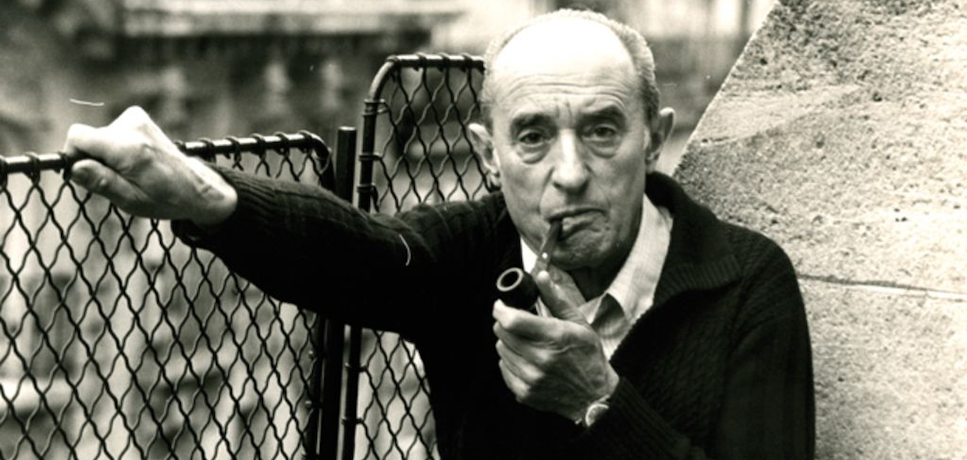
TODAY: French spy Pierre Boulle, author of The Bridge Over the River Kwai and Planet of the Apes, dies.
.
3.
1994 -
 |
TODAY: French spy Pierre Boulle, author of The Bridge Over the River Kwai and Planet of the Apes, dies.
|
Stoneham Theatre Winter Festival 2020
Jan 22 - Feb 2, 2020 | Cambridge, MA
Stoneham Theatre|395 Main St

Not all child actors are punchable dweebs that serve no relevance to the plot other than being cute. The Stoneham Theatre presents The Young Company, a group of actors and actresses from grades 1 through 12. They will put on a series of a dazzling performances of well-known and obscure productions that will prove their great range of talent on stage.
further information: Winter Festival 2020
4.
U.S. National Snow Sculpting Competition 2020
Jan 29 - Feb 2, 2020 | Lake Geneva, WI
Flat Iron Park|201 Wrigley Dr
You could roll a ball of snow into a morbidly obese snowman, but building snowmen is becoming a dying art. That's why you should sled on over to the U.S. National Snow Sculpting Competition to see what marvelous works of art can come from frozen water. With the best packing snow available, these sculptors will create any life-sized object you can think. From Greek Gods and ice dragons to army tanks and ferocious wildlife, there's no such thing as impossible in snow sculpting.
further information: Winterfest Archive - Visit Lake Geneva
5.
11th Street Cowboy Mardi Gras 2020
Feb 12 - 15, 2020 | Bandera, TX
11th Street Cowboy Bar|307 11th St

11th Street Cowboy Mardi Gras is a three-day New Orleans inspired celebration that takes place in Bandera, Texas. Throughout the weekend, attendees battle it out in multiple Mardi Gras themed competitions including the Gumbo Cook Off and costume contests for you and your canine Costume Contest. The celebration also includes live performances and a Mardi Gras parade down Main Street.
further information: Cowboy Mardi Gras
 1960's AMERICAN CROCHET PATTERN TO MAKE A WOMAN'S DRESS
1960's AMERICAN CROCHET PATTERN TO MAKE A WOMAN'S DRESS
Pictures of the day

Pictures of the day

Franklin D. Roosevelt (January 30, 1882 – April 12, 1945) was
an American politician who served as the 32nd president of the
United States. Following an illness in 1921, he was left permanently
paralyzed from the waist down, but he was careful never to be seen
using his wheelchair in public. Returning to public life, Roosevelt
served two terms as Governor of New York before becoming U.S.
president in 1933 at the height of the Great Depression. By the time
his second term as president concluded in 1941, World War II had
started and he was re-elected in 1940 and 1944. In 1945, he suffered
a massive intracerebral hemorrhage and died in office shortly before
the end of the war. Roosevelt has been rated by scholars as one of
of a photograph of Roosevelt, taken by Italian photographer Vincenzo
|
Mount Erebus
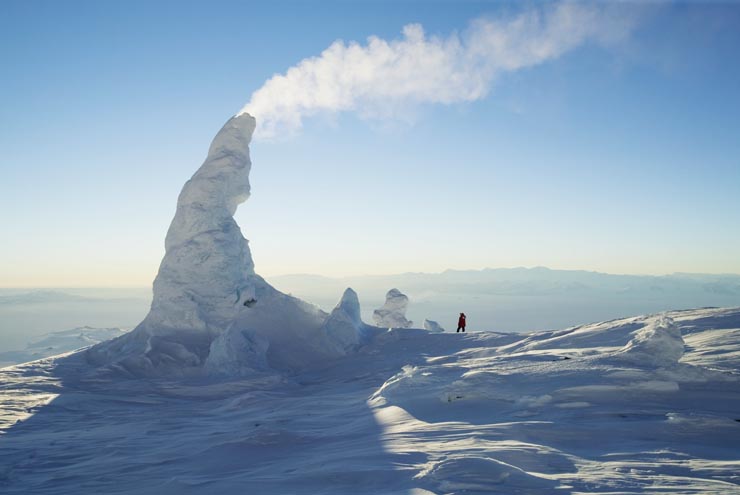
An active volcano in Antarctica, it has a permanent lake of molten lava just below its 13,000 ft. summit. On the flanks of Erebus are steam vents that have formed towers of frozen geothermal vapor.

George Washing Bridge construction
knit ... Valentine's Day
thanks, Eve

Valentine's Cowl pattern by Stacy Wilkinson
knit
thanks, Cindy

knit

knit

knit

Shells on Garter-stitch Background pattern by nalhcib
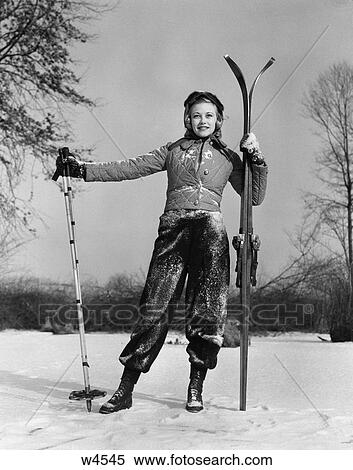
knit ... Valentine's Day
thanks, Eve

Valentine's Cowl pattern by Stacy Wilkinson
knit
thanks, Cindy
knit

knit

knit

Shells on Garter-stitch Background pattern by nalhcib

Ski Club, 1930s
Crochet Pattern of the Day:
thanks, Valerie, Canadian Correspondent

Adult Chunky Slipper

Victoria & Albert Museum
crochet
thanks, Sally
thanks, Charlotte

crochet

crochet

Valentine Teddy Bear pattern by Sharon Ojala

Colorized Empire State Building
RECIPE
thanks, Shelley, New York Food Correspondent

CROCKPOT RECIPE
thanks, Sara


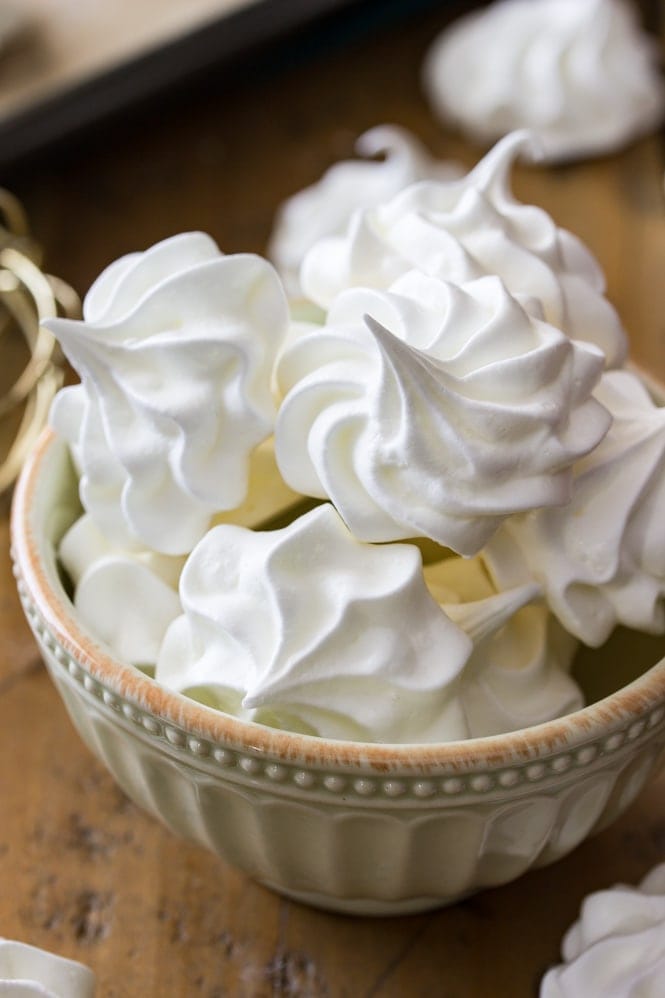
ADULT COLORING

CRAFTS ... Valentine's Day sewing


CHILDREN'S CORNER ... ... Valentine's Day

Crown Street Children
PUZZLE


SUDOKU ... hard


QUOTE

/wall-murals-railway-men-in-uniform-and-women-in-costumes-circa-1930.jpg.jpg)
Women in Costume with Railway Men in Costume

thanks for the winter funnies, Heide

 |
| Mothers and their children play in the garden, north Yorkshire, England, 1937 |
CROCKPOT RECIPE
thanks, Sara


Old Drug Store
SWEETS
SWEETS
thanks, Abby

 |
| Two couples of tennis players sitting on a bench, 1912 |
ADULT COLORING
 |
| Woman in her garden, ca. 1920s |
CRAFTS ... Valentine's Day sewing
thanks, Hazel


Horse Drawn Carriage
CHILDREN'S CORNER ... ... Valentine's Day
thanks, Lana

Crown Street Children
PUZZLE
| bean brave care climate conflict conservation crave culture | dart decline eclipse energy event fable freeze frost | ghost international little moral | paper piece plate plead present reach reduce revere ritual | screen slate storm story teach usage world |
Equatorial Frolics Crossing the Line ceremony onboard submarine HMS Oswald in 1937
SUDOKU ... hard
solution:
 |
| Young girl in bonnet with dog in 1915 |
QUOTE
thanks, Debbie
/wall-murals-railway-men-in-uniform-and-women-in-costumes-circa-1930.jpg.jpg)
Women in Costume with Railway Men in Costume

thanks for the winter funnies, Heide
CLEVER
Clear you clogged drain with cream of tartar

Never struggle with a clogged drain again, thanks to this quick cleansing mix.
EYE OPENER
ABOUT WOOL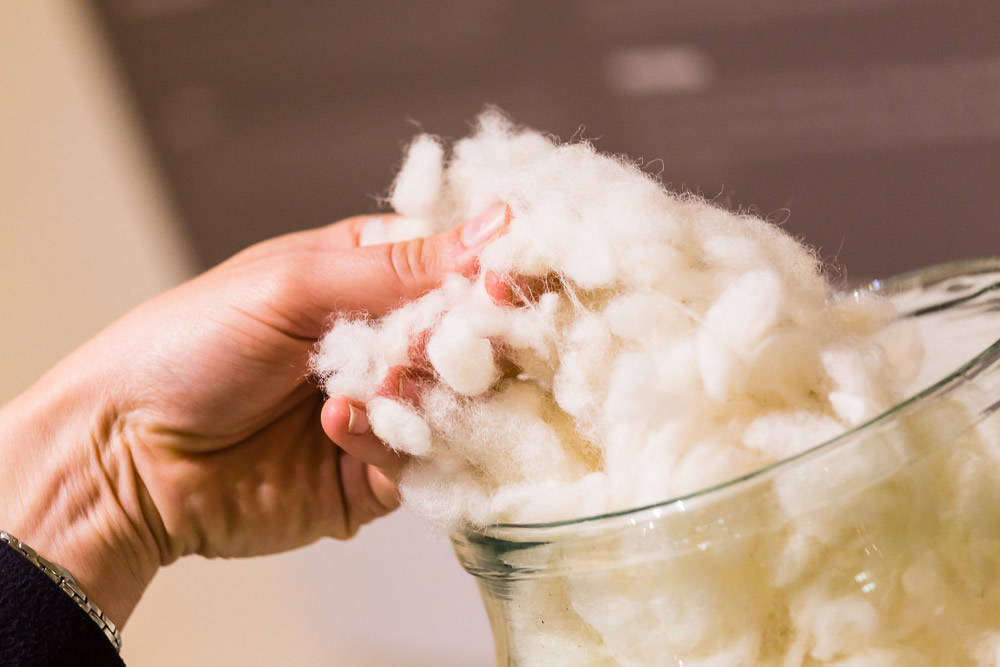

WHY WOOL?
NATURAL
Wool is a protein fiber formed in the skin of sheep, and is thus one hundred percent natural, not man-made. Since the Stone Age, it has been appreciated as one of the most effective forms of all-weather protection known to man, and science is yet to produce a fiber which matches its unique properties.
Wool is a protein fiber formed in the skin of sheep, and is thus one hundred percent natural, not man-made. Since the Stone Age, it has been appreciated as one of the most effective forms of all-weather protection known to man, and science is yet to produce a fiber which matches its unique properties.
RENEWABLE
As long as there is grass to graze on, every year sheep will produce a new fleece; making wool a renewable fiber source. Wool growers actively work to safeguard the environment and improve efficiency, endeavoring to make the wool industry sustainable for future generations.
As long as there is grass to graze on, every year sheep will produce a new fleece; making wool a renewable fiber source. Wool growers actively work to safeguard the environment and improve efficiency, endeavoring to make the wool industry sustainable for future generations.
BIODEGRADABLE
At the end of its useful life, wool can be returned to the soil, where it decomposes, releasing valuable nutrients into the ground. When a natural wool fibre is disposed of in soil, it takes a very short time to break down, whereas most synthetics are extremely slow to degrade.
At the end of its useful life, wool can be returned to the soil, where it decomposes, releasing valuable nutrients into the ground. When a natural wool fibre is disposed of in soil, it takes a very short time to break down, whereas most synthetics are extremely slow to degrade.
NATURAL INSULATOR
Wool is a hygroscopic fiber. As the humidity of the surrounding air rises and falls, the fibre absorbs and releases water vapor. Heat is generated and retained during the absorption phase, which makes wool a natural insulator. Used in the home, wool insulation helps to reduce energy costs and prevents the loss of energy to the external environment,
thus reducing carbon emissions.
Wool is a hygroscopic fiber. As the humidity of the surrounding air rises and falls, the fibre absorbs and releases water vapor. Heat is generated and retained during the absorption phase, which makes wool a natural insulator. Used in the home, wool insulation helps to reduce energy costs and prevents the loss of energy to the external environment,
thus reducing carbon emissions.
BREATHABLE
Wool fibres are crimped, and when tightly packed together, form millions of tiny pockets of air. This unique structure allows it to absorb and release moisture—either in the atmosphere or perspiration from the wearer—without compromising its thermal efficiency. Wool has a large capacity to absorb moisture vapor (up to 30 per cent of its own weight) next to the skin, making it extremely breathable.
Wool fibres are crimped, and when tightly packed together, form millions of tiny pockets of air. This unique structure allows it to absorb and release moisture—either in the atmosphere or perspiration from the wearer—without compromising its thermal efficiency. Wool has a large capacity to absorb moisture vapor (up to 30 per cent of its own weight) next to the skin, making it extremely breathable.
RESILIENT & ELASTIC
Wool fibers resist tearing and are able to be bent back on themselves over 20,000 times without breaking. Due to its crimped structure, wool is also naturally elastic, and so wool garments have the ability to stretch comfortably with the wearer, but are then able to return to their natural shape, making them resistant to wrinkling and sagging. Wool therefore maintains its appearance in the longer term, adding value to the product and its lifespan. Wool is also hydrophillic—it is highly absorbent, and retains liquids—and so dyes richly while remaining colorfast, without the use of chemicals.
Wool fibers resist tearing and are able to be bent back on themselves over 20,000 times without breaking. Due to its crimped structure, wool is also naturally elastic, and so wool garments have the ability to stretch comfortably with the wearer, but are then able to return to their natural shape, making them resistant to wrinkling and sagging. Wool therefore maintains its appearance in the longer term, adding value to the product and its lifespan. Wool is also hydrophillic—it is highly absorbent, and retains liquids—and so dyes richly while remaining colorfast, without the use of chemicals.
MULTI-CLIMATIC/ TRANS-SEASONAL
Thanks to its hygroscopic abilities, wool constantly reacts to changes in body temperature, maintaining its wearer’s thermophysical comfort in both cold and warm weather.
Thanks to its hygroscopic abilities, wool constantly reacts to changes in body temperature, maintaining its wearer’s thermophysical comfort in both cold and warm weather.
EASY CARE
The protective waxy coating on wool fibres makes wool products resistant to staining and they also pick up less dust as wool is naturally anti-static. Recent innovations mean wool items are no longer hand-wash only. Many wool products can now be machine-washed and tumble dried.
The protective waxy coating on wool fibres makes wool products resistant to staining and they also pick up less dust as wool is naturally anti-static. Recent innovations mean wool items are no longer hand-wash only. Many wool products can now be machine-washed and tumble dried.
ODOR RESISTANT
Wool is far more efficient than other textiles at absorbing sweat and releasing it into the air, before bacteria has a chance to develop and produce unpleasant body odor.
Wool is far more efficient than other textiles at absorbing sweat and releasing it into the air, before bacteria has a chance to develop and produce unpleasant body odor.
A SAFE SOLUTION
Wool is naturally safe. It is not known to cause allergies and does not promote the growth of bacteria. It can even reduce floating dust in the atmosphere, as the fiber's microscopic scales are able to trap and hold dust in the top layers until vacuumed away. Thanks to its high water and nitrogen content, wool is naturally flame-retardant, and has a far higher ignition threshold than many other fibres, will not melt and stick to the skin causing burns, and produces less noxious fumes that cause death in fire situations. Finally, wool also has a naturally high level of UV protection, which is much higher than most synthetics and cotton.
Wool is naturally safe. It is not known to cause allergies and does not promote the growth of bacteria. It can even reduce floating dust in the atmosphere, as the fiber's microscopic scales are able to trap and hold dust in the top layers until vacuumed away. Thanks to its high water and nitrogen content, wool is naturally flame-retardant, and has a far higher ignition threshold than many other fibres, will not melt and stick to the skin causing burns, and produces less noxious fumes that cause death in fire situations. Finally, wool also has a naturally high level of UV protection, which is much higher than most synthetics and cotton.
british fact and figures
The Prince of Wales has helped to bring wool back from the brink of obscurity. It’s been a resounding global success but there is still more work to do and promoting wool as the natural, renewable and biodegradable alternative to synthetic fibers remains as important as ever!
Here are some key facts about what the wool industry, supported by The Campaign for Wool has achieved:
90% of sales from British fashion brands and 50% of sales from interiors brands are made abroad – British style has never been so fashionable, and the ‘made in the UK’ label continues to be a deciding factor in global purchasing decisions
The biggest export markets for the British wool industry which is comprised of weavers, spinners, carpet manufacturers and fashion brands are Japan, the US and Germany with China quickly catching up.
Great Britain also has a large market in the export of contract upholstery for the transport sector, and wool is the chosen material for many new planes, trains and cars due to its incomparable safety record.
8,000 weavers are employed at 40 British mills. This figure has risen by 25% in the past year as mills such as business such as Abraham Moon of Guiseley in Yorkshire continue to grow their export business around the world.
New companies such as Wool and The Gang are making traditional crafts such as knitting and crochet fashionable again and have seen fourfold increase in sales year on year.
Merino wool continues to attract the attention of the sportswear and next to skin market, thanks to its excellent ability to regulate body temperature and wick moisture away from the body. Finisterre, the British cold water surfing brand, cycling leaders Rapha and Adidas are all embracing merino as a modern material ideally suited to the needs of their customers.
The British market for wool in interiors and apparel is currently worth £3bn
Wool still only represents 2% of all clothing sold, with oil based synthetic fibers still dominating.


A THOUGHT FOR TODAY:
The power to command frequently causes failure to think. -Barbara Tuchman, author and historian (30 Jan 1912-1989)
OPTICAL ILLUSION



No comments:
Post a Comment